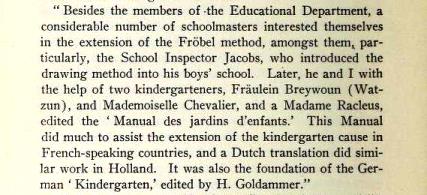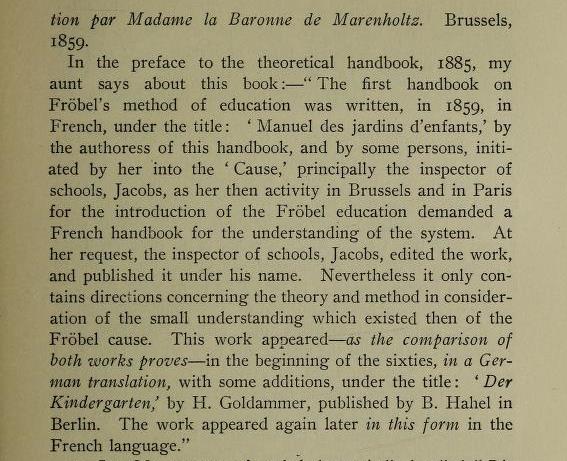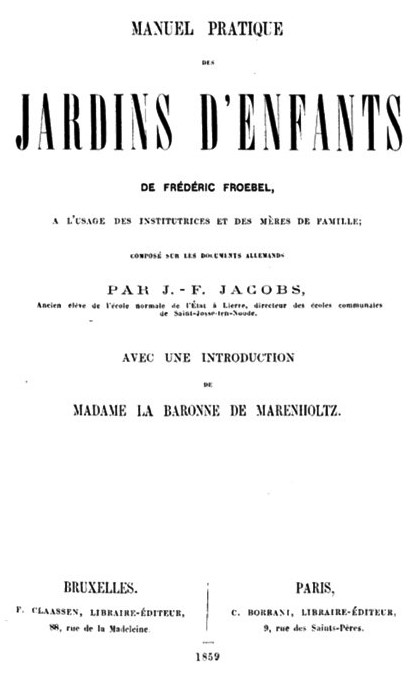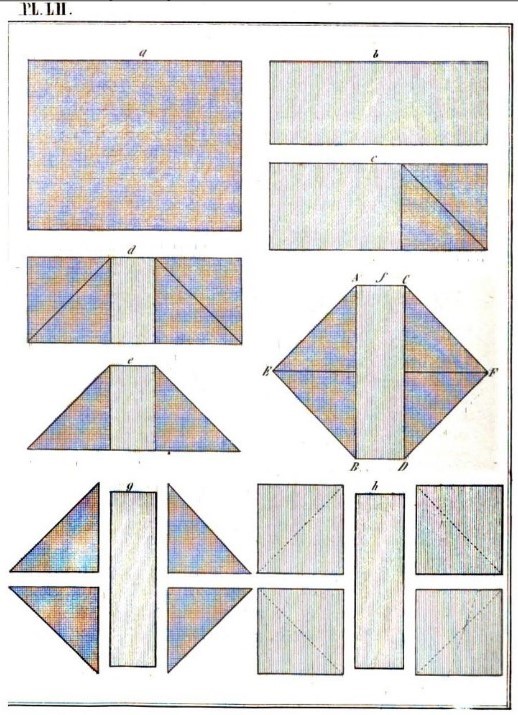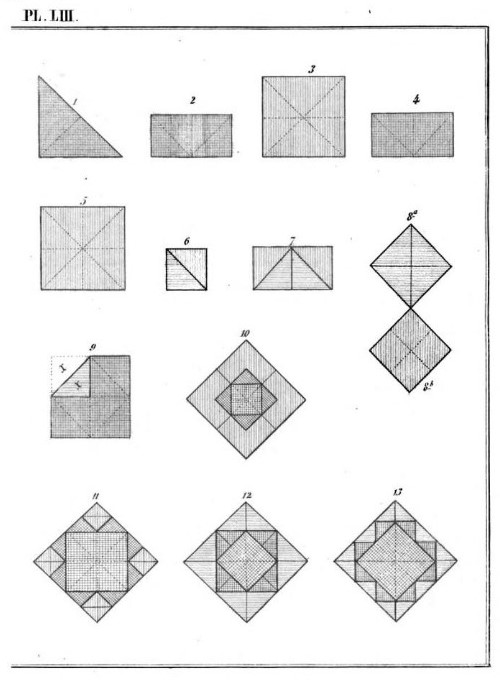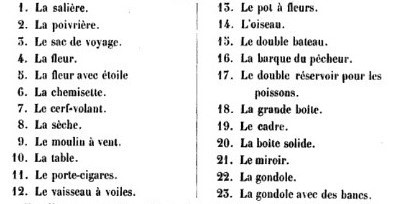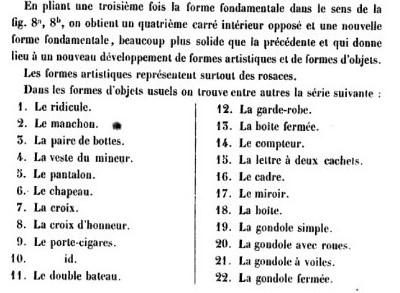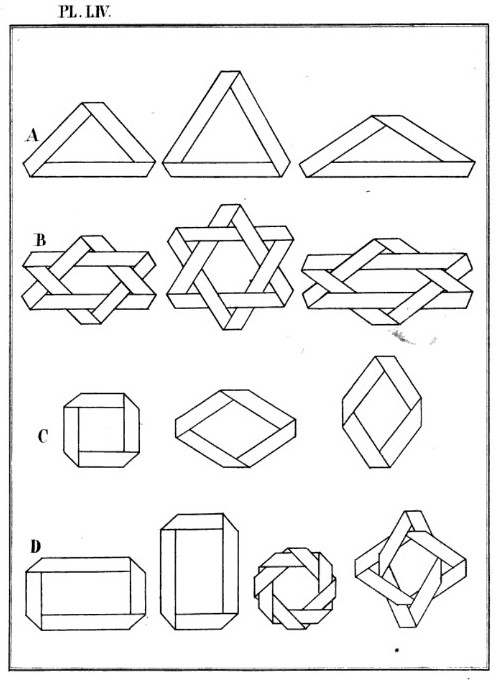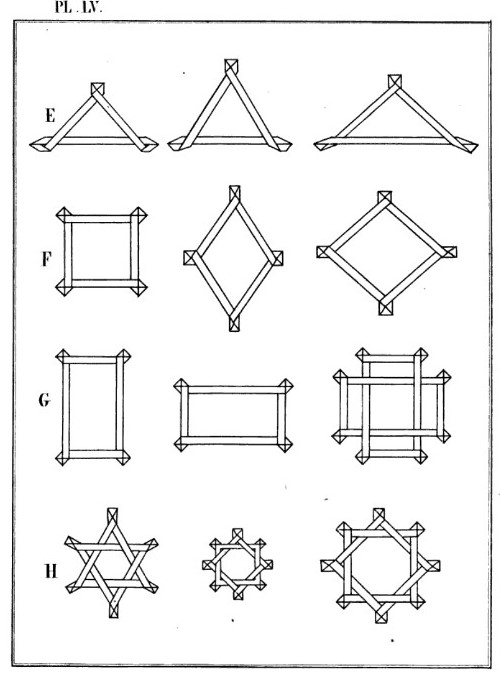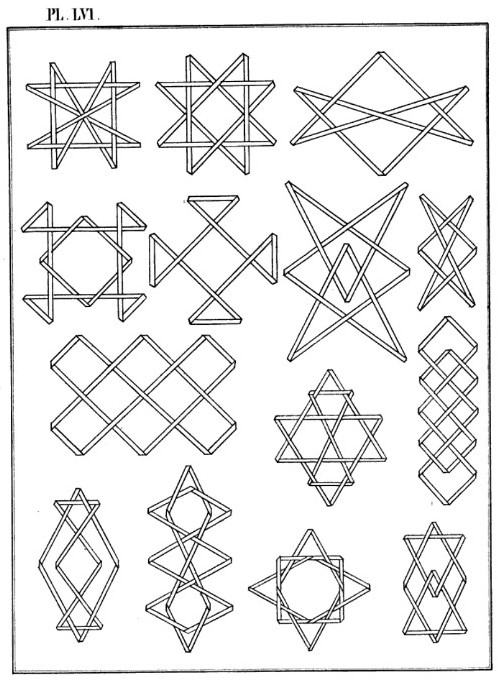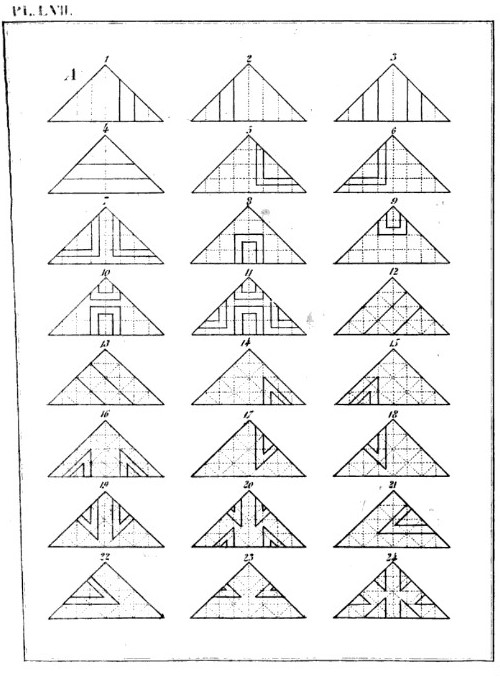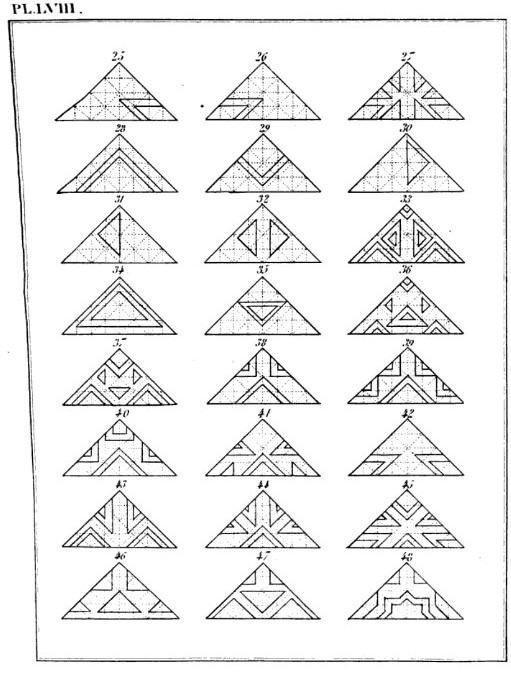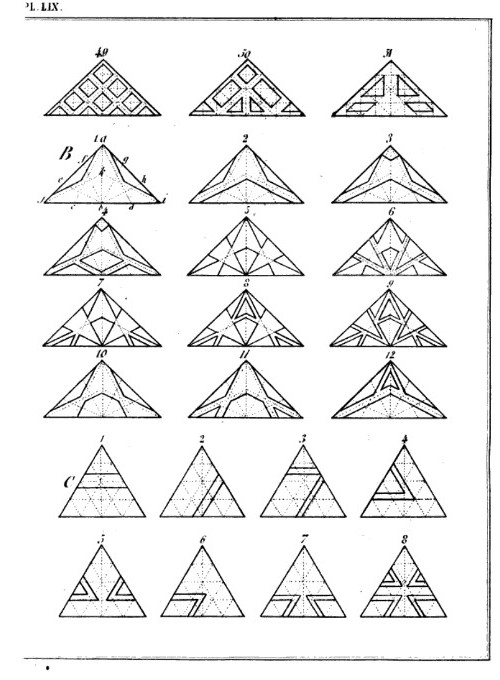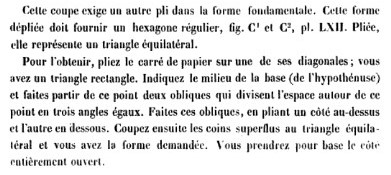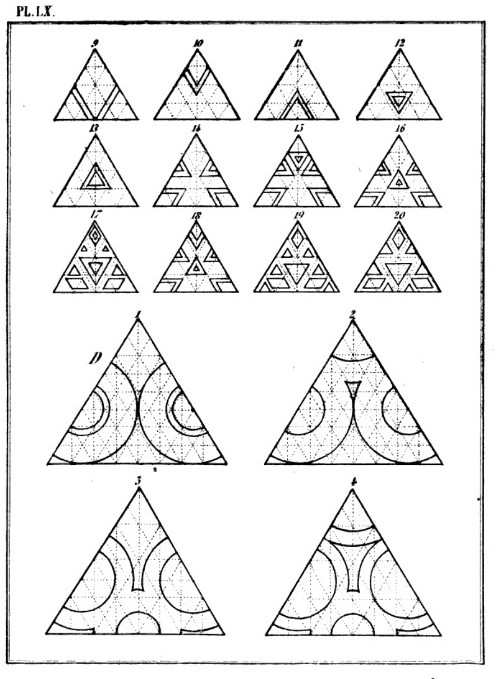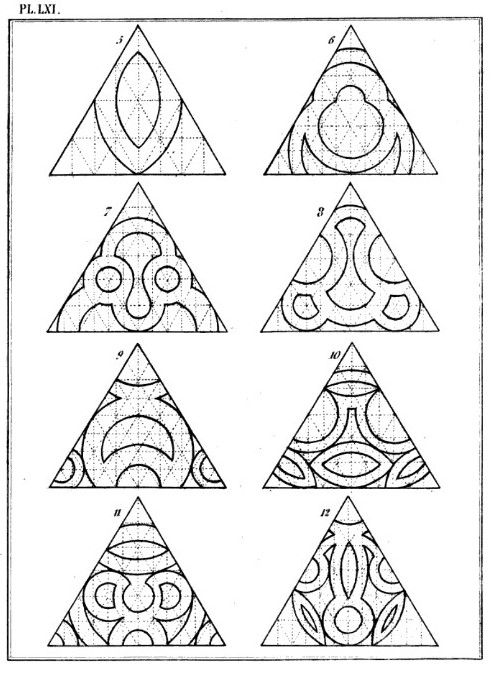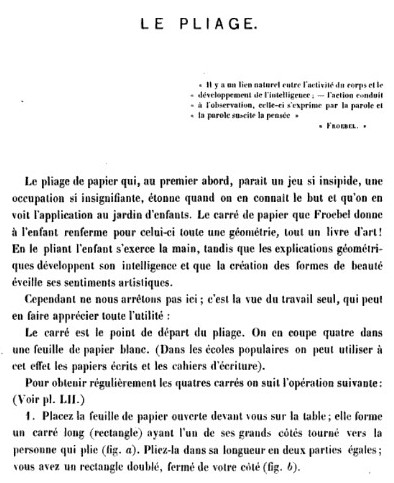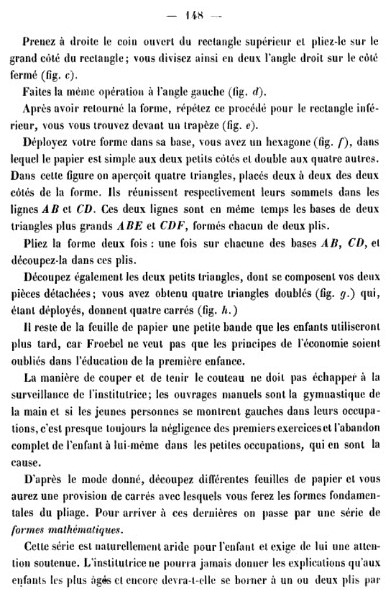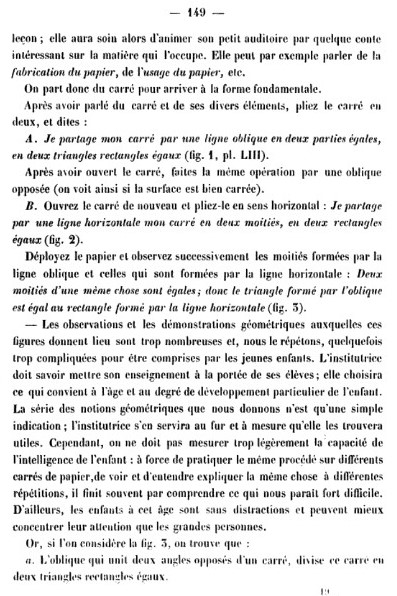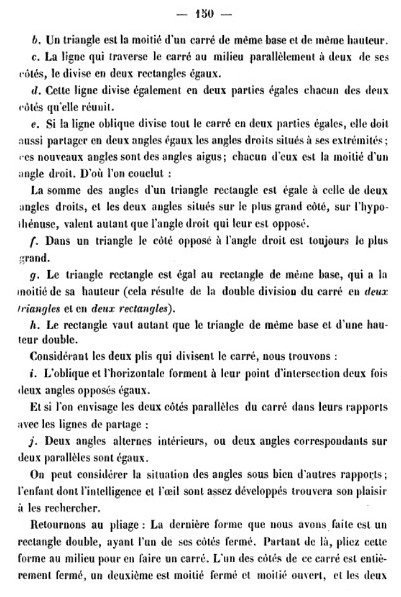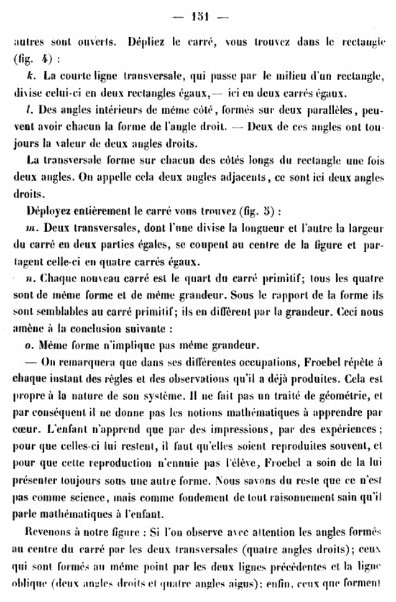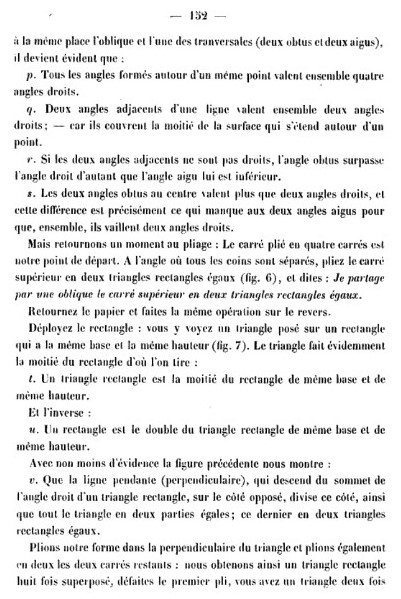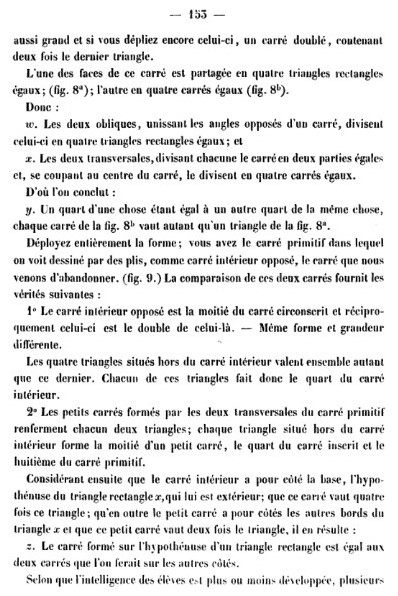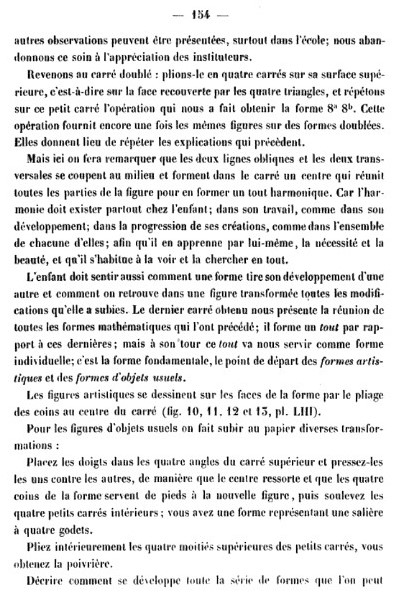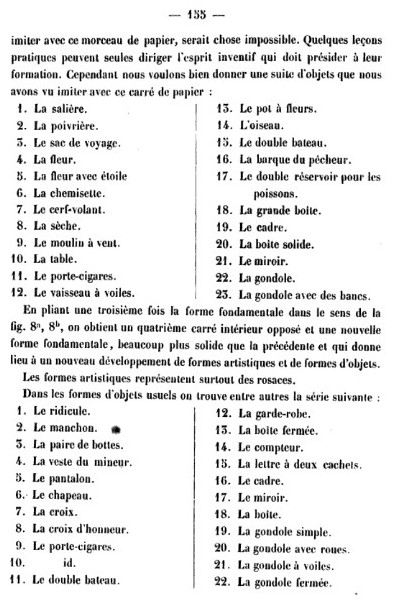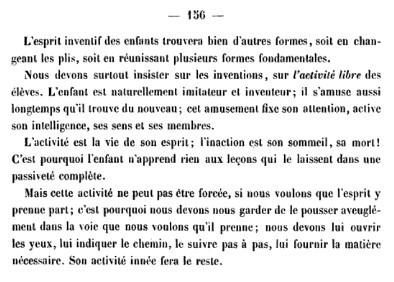| The Public Paperfolding History Project
Last updated 29/9/2025 x |
|||||||
| Manuel Pratique de Jardins D'Enfants de Friedrich Froebel, 1859 | |||||||
| 'Manuel
pratique des jardins d'enfants de Frédéric Froebel' was
'compose sur les documents Allemands' by J F Jacobs and
published by F Claassen in Brussells and L Hachette and
Cie in Paris in 1859. It contains chapters on Le Pliage,
L'Entrelacement and Le Decoupage. The chapter on Le
Pliage is reproduced at the foot of this page. ********** Authorship According to 'The Life of the Baroness Marenholz-Bulow' (available online here) this work was the result of a collaboration between J F Jacobs, Baroness Marenholz-Bulow, Fraulein Breywoun, Mademoiselle Chevalier and Madame Racleus.
and
********** Editions and translations An almost full copy of the 1859 first edition (just missing Plate LII) can be accessed here. A 'revue et augmentee' second edition was published in 1864 but there were no changes to the paperfolding material. A full copy of this second edition can be accessed here. The work was translated into Dutch in 1860 (as Praktisch Handboek om Kinderen van 2 tot 8 Jaar), into Italian in 1871 (as Manuale Practico dei Giradini D'Infanzia di Federico Frobel). According to the Foreword to 'Der Kindergarten', edited by Hermann Goldammer, which was published by Habel in Berlin in 1869, it was also translated into German but the manuscript was lost (and thus never published). In 1859, the information about paperfolding was translated into Spanish and published in an article by Mariano Carderera in 'Anales de Primera Ensenanza. Periodico de las escuelas y de los maestros'. **********
********** Authorship and translations 'The Life of the Baroness Marenholz-Bulow' (available online here) gives further information about the authorship of this book. It also claims that the book was translated into German and Dutch, and that the German translation formed the foundation of 'Der Kindergarten' by Hermann Goldammer.
On an earlier page the author wrote:
********** Analysis Le Pliage Plate LII gives a method of obtaining four squares from a rectangle.
********** Plate LIII illustrates some basic Forms of Beauty and gives four geometric patterns developed from the Double Blintz Basic Form (a square that has been blintzed, turned over and blintzed again) two from one side and two from the other (pictures 10 to 13).
********** Page 155 contains two lists of 'figures d'objets usuels' (figures of everyday objects). Unfortunately there are no pictures of these objects to help in identifying the designs listed. Many of the designs, although not all, can, however, be identified with some certainty either from their names alone, from their position in the lists, or by reference to other works, particularly 'The Kindergarten Guide' by Maria Kraus Boelte and John Kraus, which was published in 1877, 'The Kindergarten Principle' by Mary J Lyschinska, which was published in 1880. Despite their later date these works seem to contain mostly the same designs in the same order. Reference to 'De Kleine Papierwerkers 1' by Elise Van Calcar, which was published in 1863 has also proved helpful. List 1:
This list appears to be of designs derived from either the salt cellar or the windmill base. The designs listed are: 1. La salière - The Saltcellar 2. La poivrière - The Pepperpot 3. Le sac de voyage - The Travel Bag 4. La fleur - - not identified but probably The Flat Flower 5. La fleur avec étoile - not identified 6. La chemisette - not identified 7. Le cerf-volant - not identified but probably The Kite 8. La sèche (the Cigarette) - not identified 9. Le moulin à vent - The Windmill 10. La table - The Table 11. Le porte-cigares - The Cigar Case 12. Le vaisseau à voiles - The Boat with Sail 13. Le pot à fleurs - The Vase 14. L'oiseau (the bird) - probably the Cocotte / Pajarita). 15. Le double bateau - The Double Boat 16. La barque du pécheur (fishing boat) - The Boat with Fish Box 17. Le double réservoir pour les poissons (double tanks for fish) - The Portfolio 18. La grande boite - The Open Box 19. Le cadre - The Frame 20. La boite solide - The Solid Box 21. Le miroir - The Mirror 22. La gondole - The Gondola 23. La gondole avec des bancs (the gondola with benches). If I am right about the designs in the sequence leading up to this point then this item in the list appears to be an error ... since there are no flaps to pull out to change the form to add benches to the design. ********** List 2:
The text says, roughly, 'By folding the shape a third time in the direction of fig 8a, 8b we obtain a fourth inner square opposite and a new fundamebtal form, much more solid than the preceeding one and which gives rise to a new development of artistic forms and forms of objects. The artistic forms mostly represent rosettes. In the forms of everyday objects we mostly find among others the following series:' This makes it clear that the second list is based on the triple blintz basic form or the blintzed windmill base. The designs listed are: 1. Le ridicule (ridicule). I cannot identify this design from any other source. However, on the basis that the title could be interpreted to mean 'fool' or 'clown' it is tempting to speculate whether this could possibly be the design known in the Japanese tradition as Yakkosan, which is made by turning three of the flaps of the triple blintz basic form into rectangles. 2. Le manchon - The Muff 3. La paire de bottes (pair of boots) - The Pair of Boots 4. La veste du mineur (child's jacket) - The Jacket 5. Le pantalon (trousers) - The Trousers 6. Le chapeau (the hat) - A hat can be made by folding the cross in half downwards. If this is the design intended it seems misplaced in the sequence here. Lyschinska has the hat after the Cross (from which it is made) and before the Jacket and says '4. Hat:- Fold the cross into half.' No illustration of this design is given and the Hat does not seem to occur elsewhere in the literature. However the same design occurs, upside down, in 'Pleasant Work for Busy Fingers' by Maggie Browne, published in London in 1896, as the Short Jacket. 7. La croix - The Cross 8. La croix d'honneur - not identified 9. Le porte-cigares - The Cigar Case. This design has the same name as no 11 in the first list. I presume that it is the same form but folded from a blintzed (rather than a normal) windmill base. 10. id. (same). Presumably two different versions of this design are possible. If so I cannot identify the difference between them. 11. Le double bateau - The Double Hulled Boat - ie the Double Boat folded from a blintzed windmill base. 12. La garde-robe - not identified 13. La boite fermée (the closed box) - not identified 14. Le compteur - not identified 15. La lettre à deux cachets (the letter with two stamps) - not identified 16. Le cadre - The Picture Frame - made by collapsing the sides of the Junk Box. 17. Le miroir - The Looking Glass - made by folding two sides of the Picture Frame backwards in preparation for developing the Chinese Junk. 18. La boîte - misplaced in the sequence but presumably the Junk Box. 19. La gondole simple - presumably the Gondola made from a blintzed windmill base ie the Chinese Junk without the 'sails' raised. 20. La gondole avec roues (the gondola with wheels) - not identified 21. La gondole à voiles (the gondola with sails) - The Chinese Junk) 22. La gondole fermée (the closed gondola) - not identified ********** L'Entrelacement Flat forms folded from one or more strips of paper.
********** Le Decoupage Plates LVII, LXVIII and the first part of Plate LIX show ways of cutting designs into squares which have been folded into an eight layer silver triangle.
********** The second part of Plate LIX and Plates LX and LXI show ways of cutting designs from hexagons which have been folded into a six layer equilateral triangle. The method given to obtain the hexagon from a square is:
In English, roughly, 'fold the square of paper on one of its diagonals; you have a rectangle triangle. Find the midpoint of the base ... and from this point start two obliques which divide the space around this point into three equal angles ... then cut off the superfluous corners.' If opened out this will create a Fold and One Cut Hexagon.
********** Source Pages
********** |
|||||||
